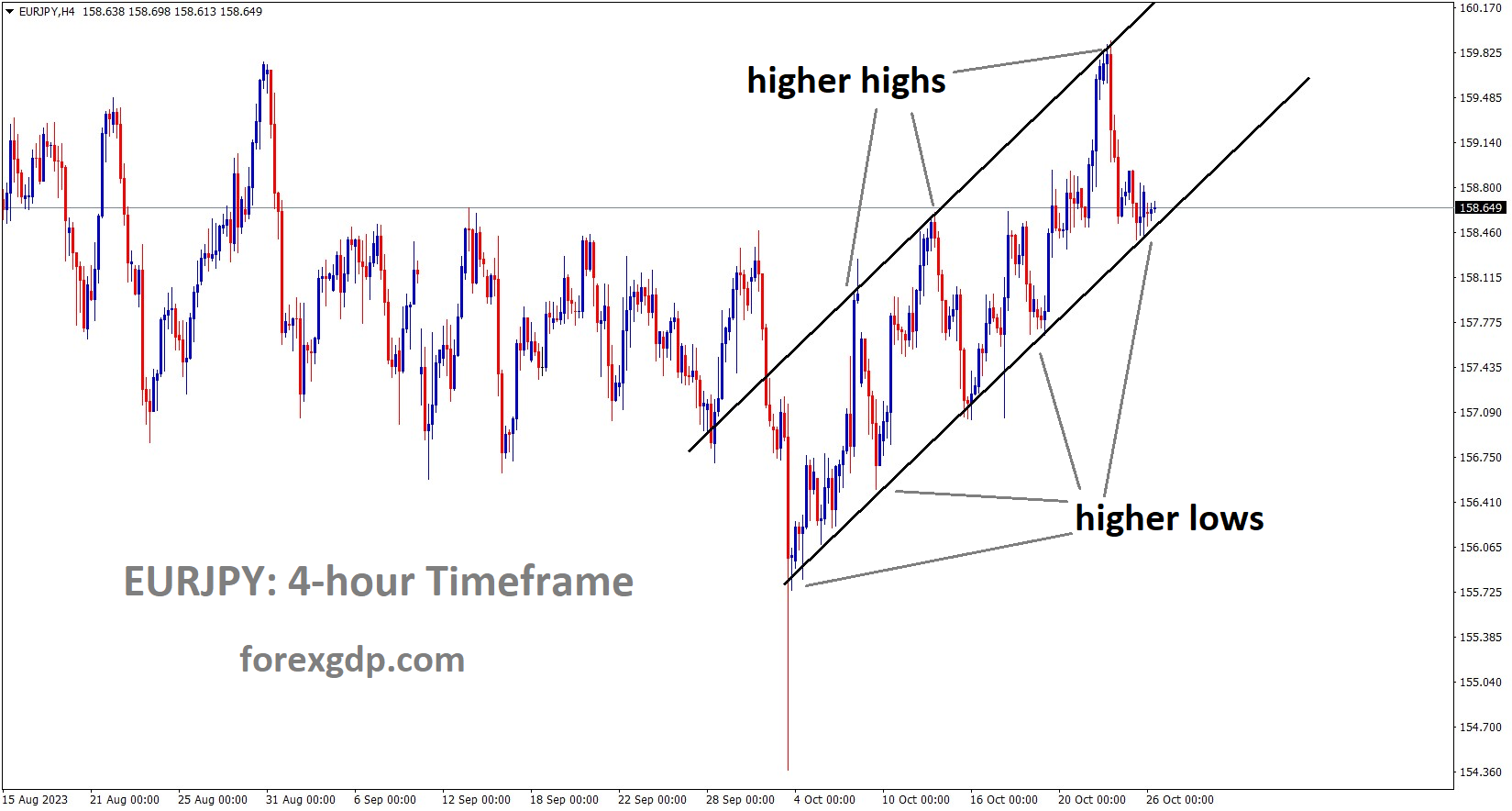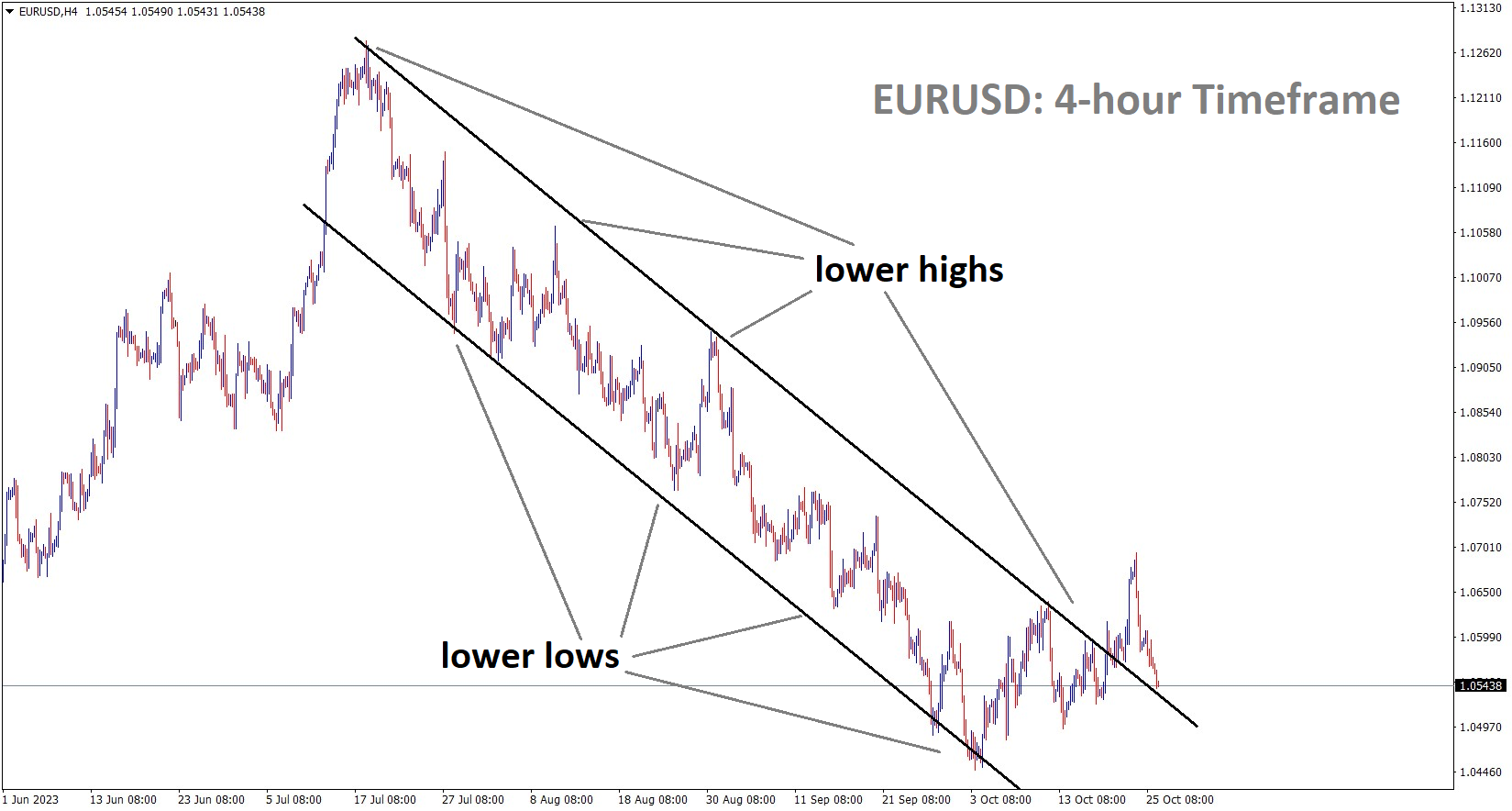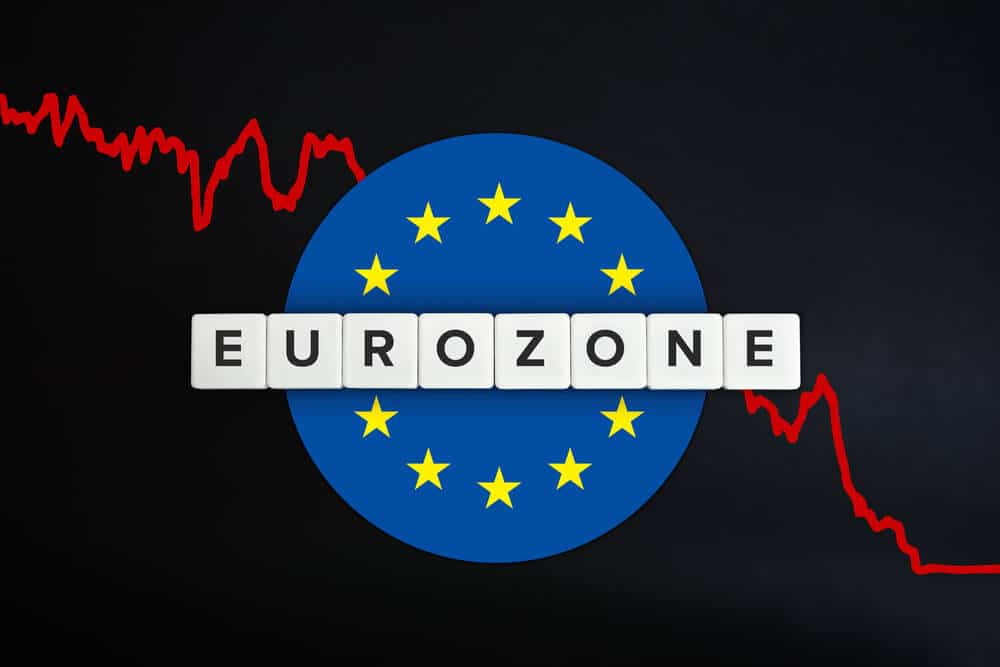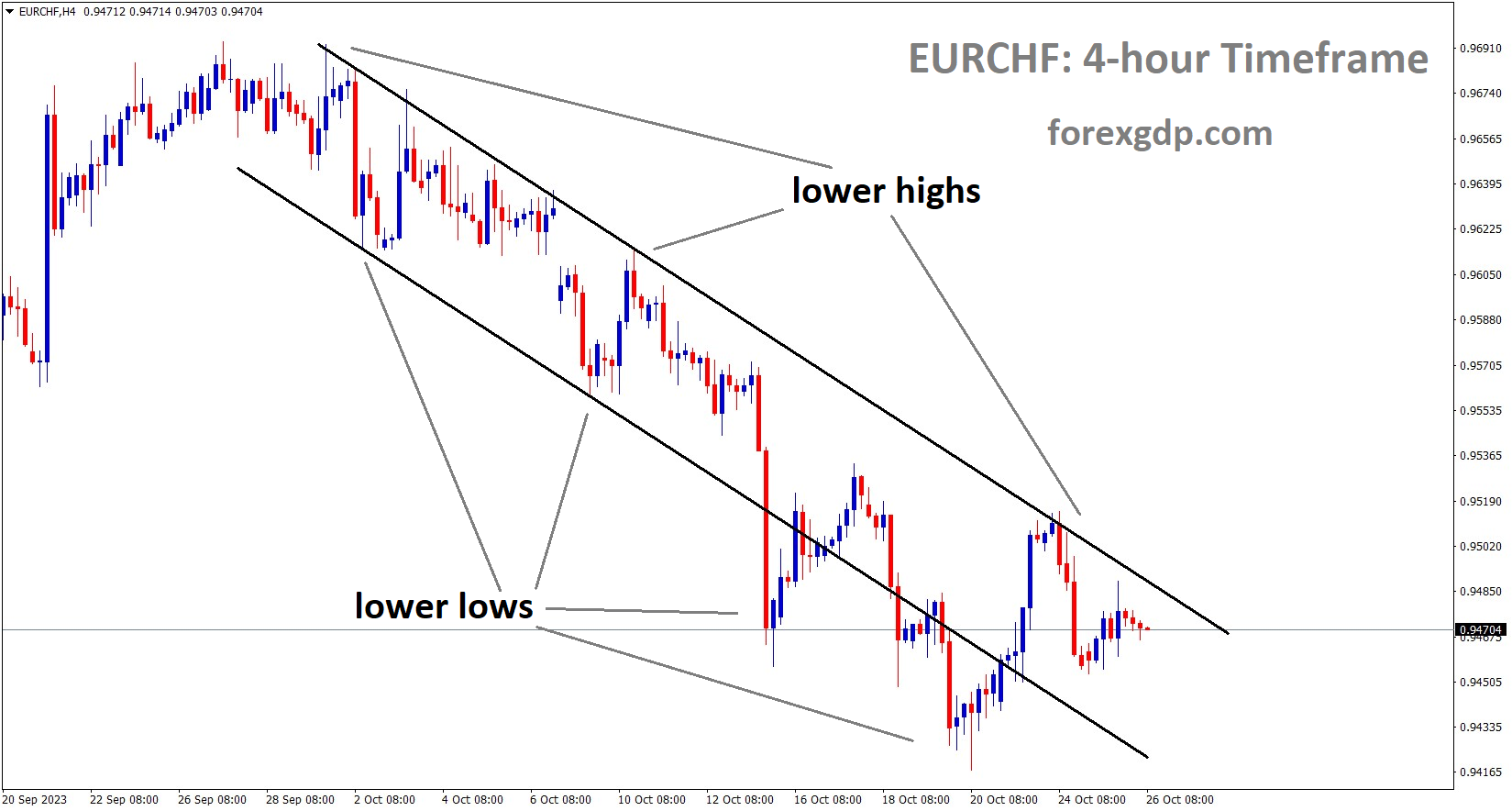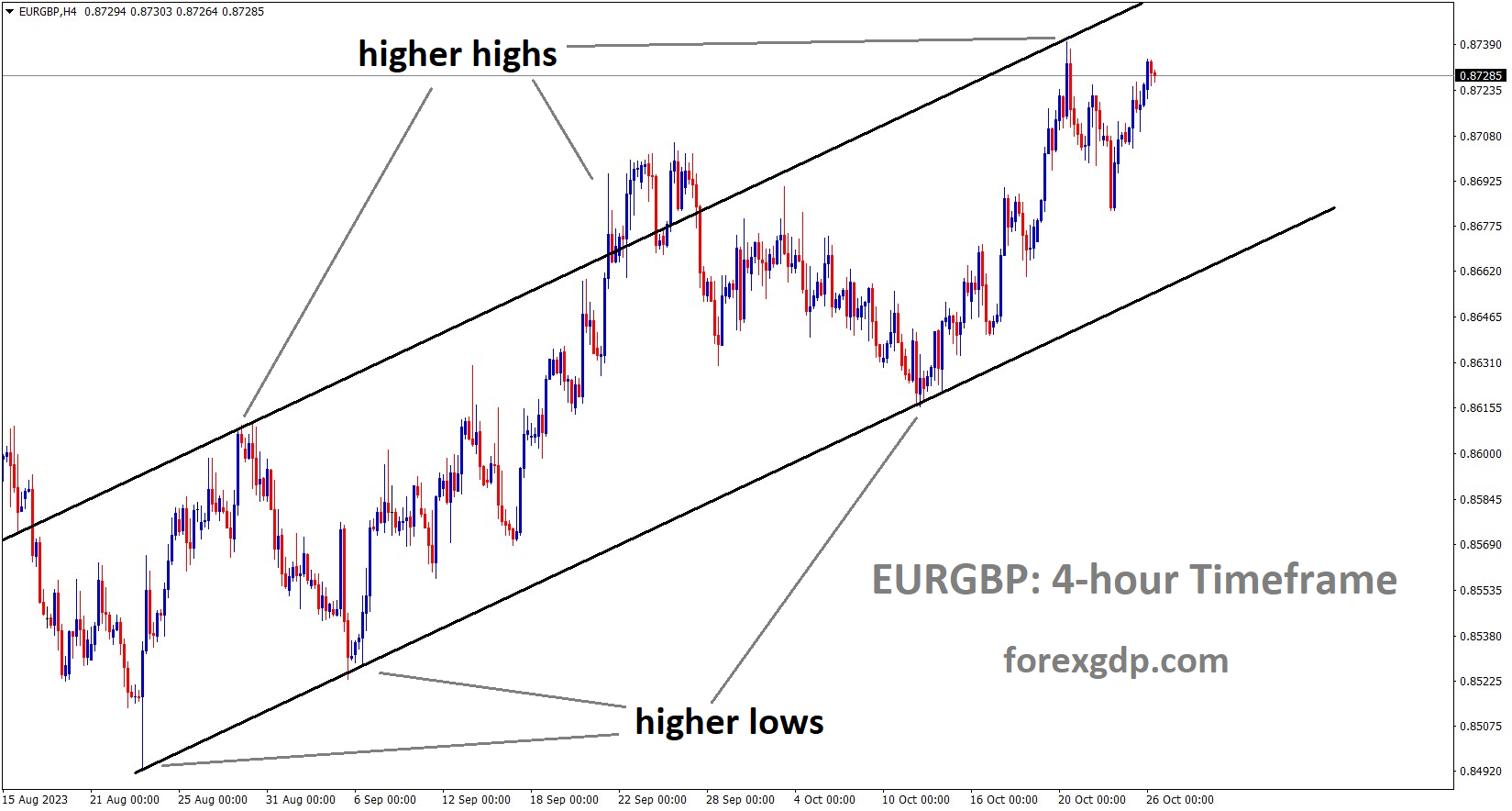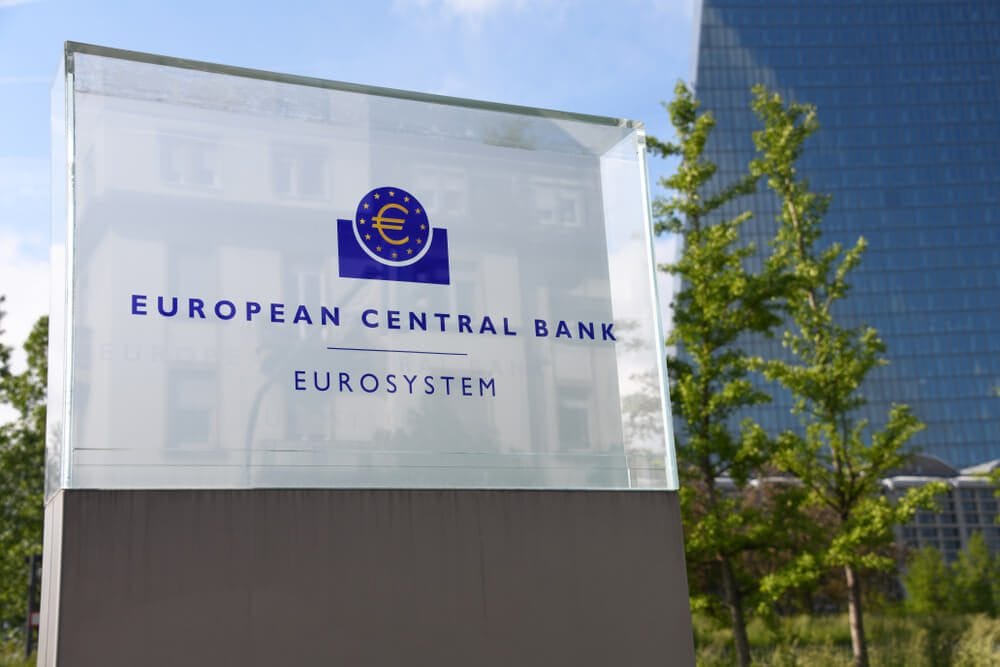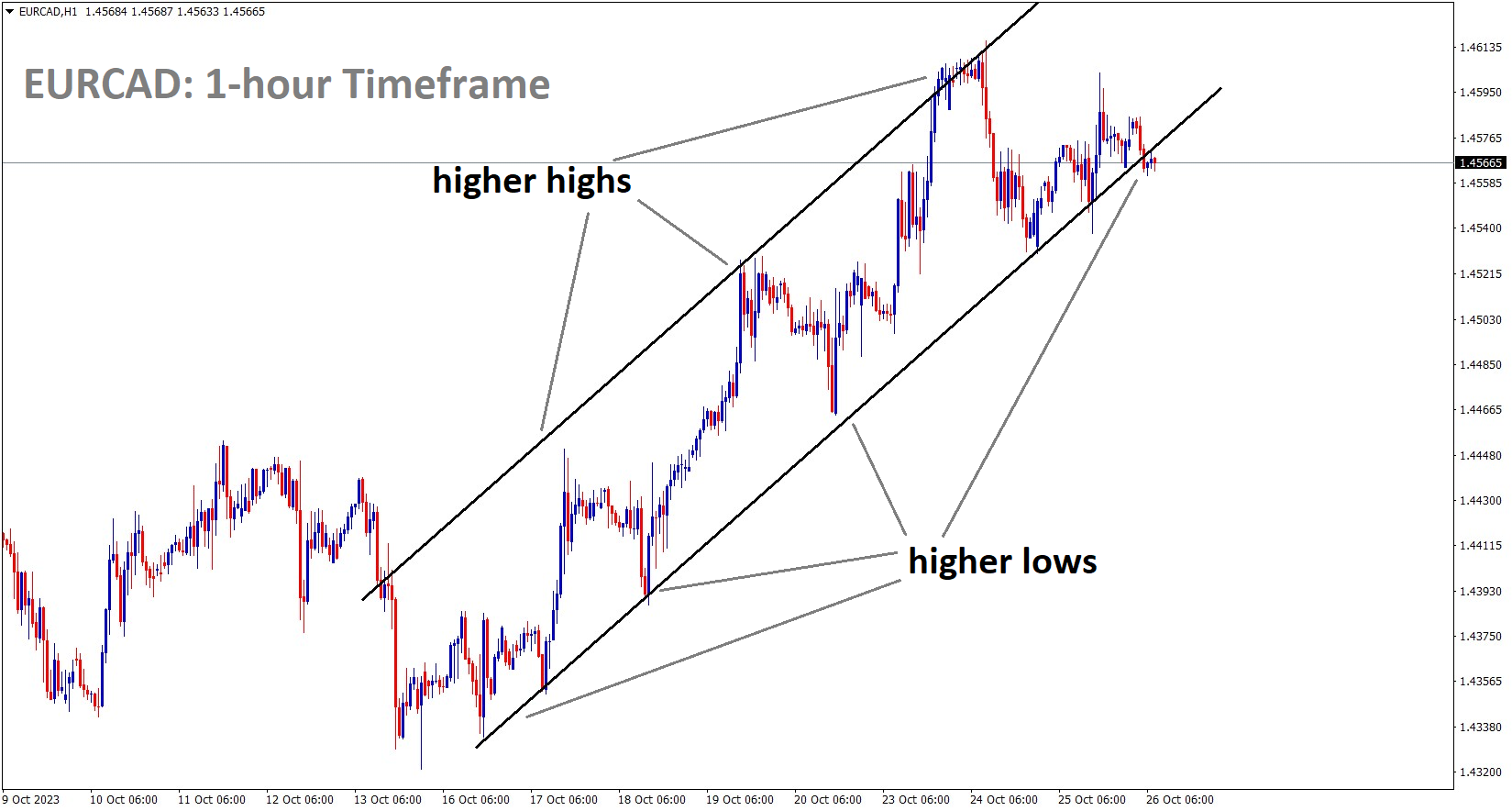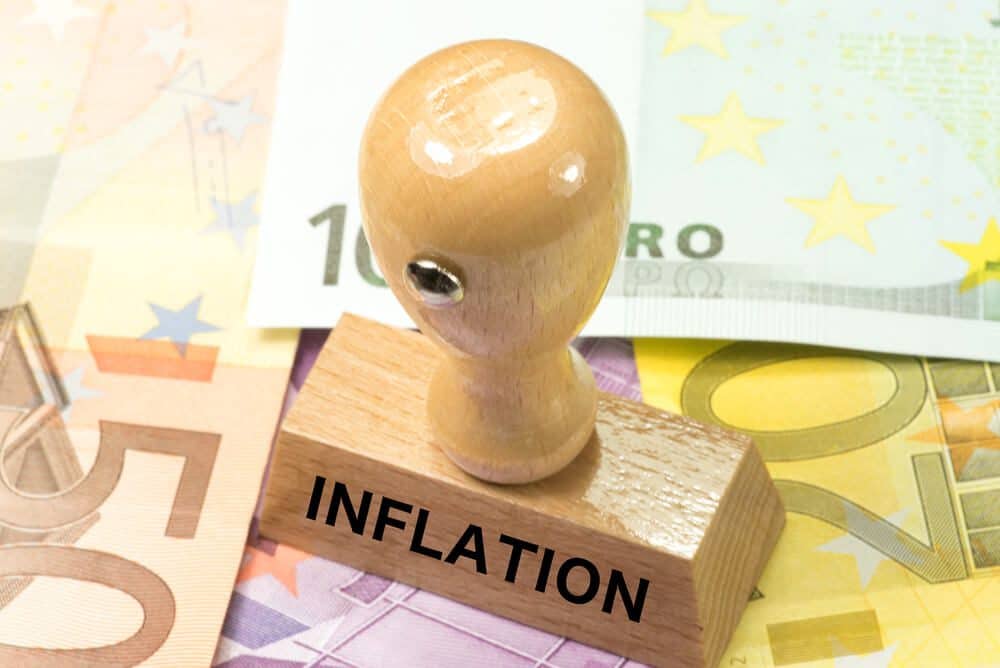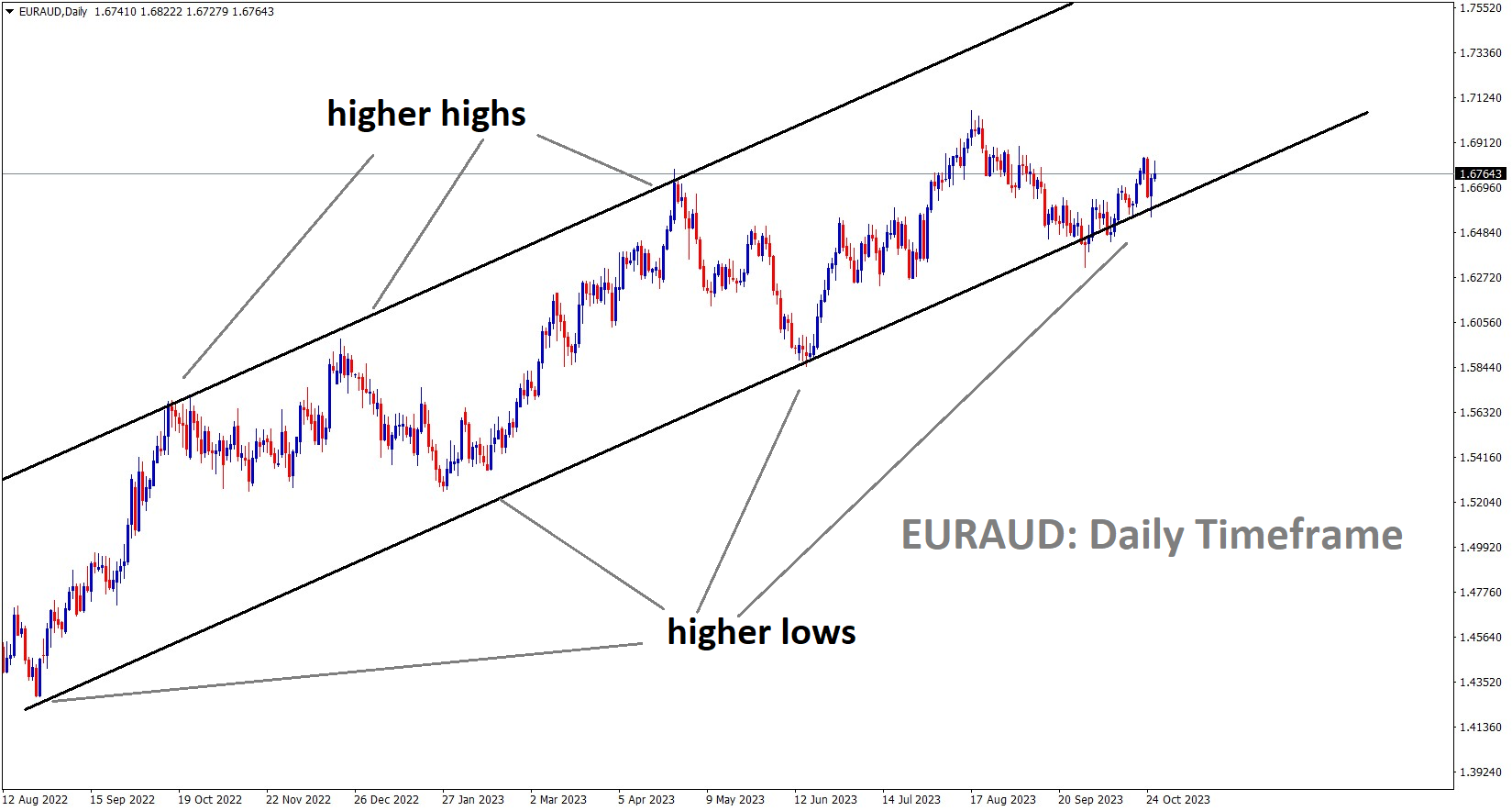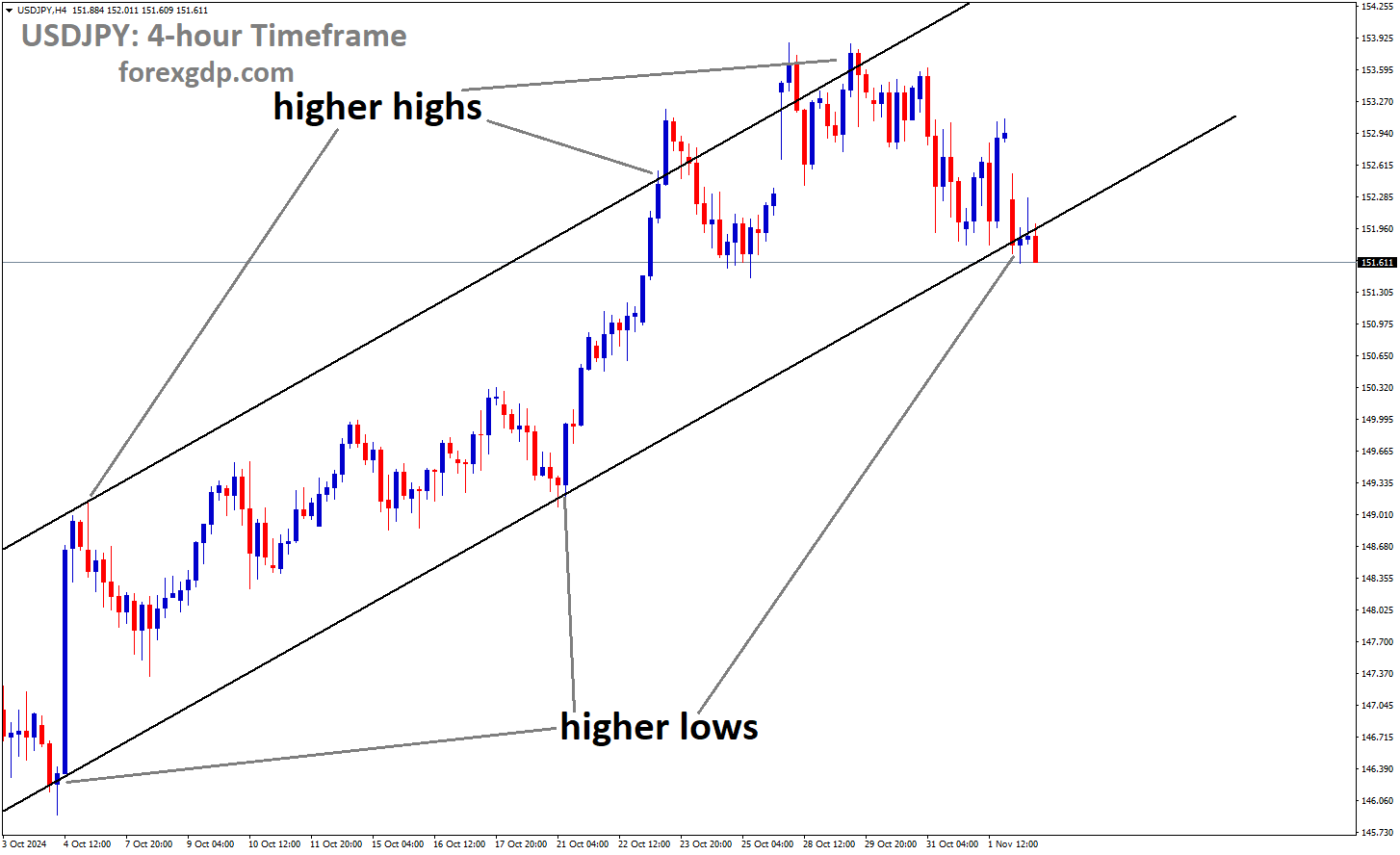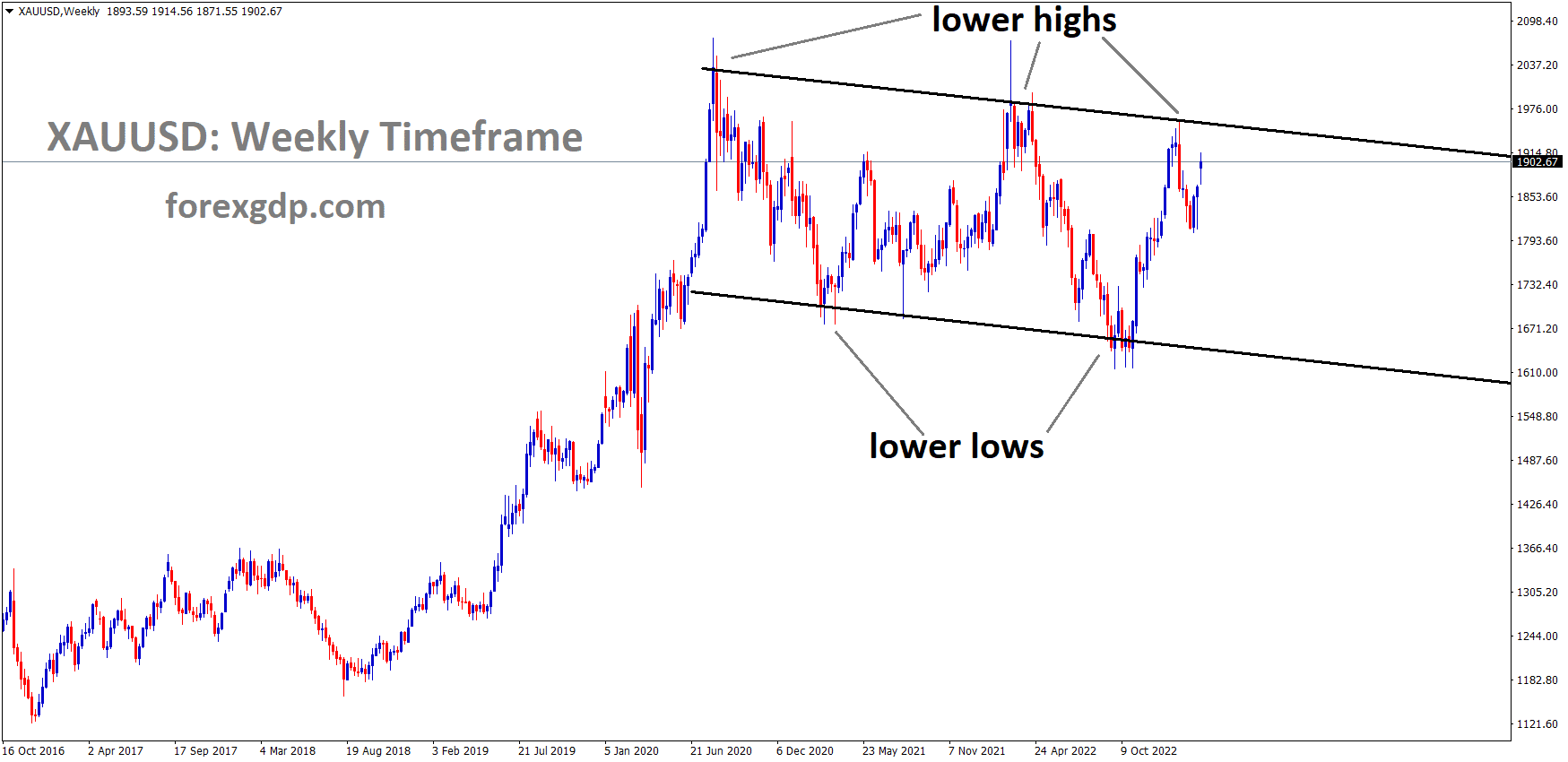EURJPY is moving in an Ascending channel and the market has reached the higher low area of the channel
The ECB is inclined to maintain the current interest rates during this meeting. ECB President Lagarde already indicated this stance in the previous meeting, and factors such as the ongoing conflict in Israel and energy price pressures further support the decision to keep rates unchanged at this meeting
Central Banks and the Path to Monetary Normalization
Central Banks Approach the End of Rate Hikes
The global financial landscape is undergoing a significant shift as central banks approach the end of their rate hike cycles. For years, central banks around the world have been implementing policies to raise interest rates in response to various economic factors, including inflation concerns. However, as economic conditions evolve, many central banks are reevaluating their strategies.
The driving force behind these rate hikes has been the need to curb inflation, which has been on the rise in many regions. Central banks have aimed to strike a balance between taming inflation and avoiding any detrimental impact on economic growth. This balancing act has been central to their monetary policy decisions in recent times.
ECB’s Surprising Decision
One of the most unexpected moves in the central banking world came from the European Central Bank (ECB). In September 2023, the ECB decided to raise its key interest rates by 25 basis points, bringing the deposit rate to 4.00% and the refinancing rate to 4.50%. This decision was surprising, as many analysts and market observers had anticipated the ECB to maintain the status quo or even consider a rate cut.
The ECB’s move raised questions about its outlook on inflation. Traditionally, central banks have used interest rates as a tool to combat rising inflation. By increasing rates, they aim to reduce borrowing and spending, thereby curbing inflationary pressures. However, the ECB’s decision to raise rates suggested that it viewed inflation as a persistent threat, warranting continued tightening.
Fed and BoE’s Status Quo
In stark contrast to the ECB, the US Federal Reserve (Fed) and the Bank of England (BoE) opted for a different approach in September 2023. Both central banks chose to maintain their existing interest rates, signaling a cautious stance on further rate hikes. This decision was in line with market expectations for the Fed but came as a surprise in the case of the BoE.
The Fed and the BoE, like the ECB, face the challenge of managing inflation without stifling economic growth. However, their decisions to keep rates steady suggest that they may be more concerned about potential downsides to growth, particularly in light of recent economic data.
Monetary Tightening and the Struggle with Inflation
Central banks are confronted with the delicate task of addressing inflationary pressures while avoiding measures that could harm economic growth. The rate hikes undertaken by these institutions are part of their efforts to find a middle ground between these competing objectives.
The logic behind raising interest rates during times of high inflation is to reduce consumer spending and borrowing, which can help cool the economy and reduce price pressures. However, if central banks tighten monetary policy too aggressively, it can lead to a slowdown in economic activity or even a recession.
EURUSD is moving in the Descending channel and the market has fallen from the lower high area of the channel
This dilemma underscores the complexity of central banks’ decision-making processes and their responsibility to maintain both price stability and sustainable economic growth.
Assessing the Rate Hike Landscape
A closer examination of central banks’ rate hike paths reveals varying approaches and timelines for monetary normalization. In September 2023, out of approximately 40 central banks globally, only around ten had chosen to raise their policy rates. The ECB’s decision to raise rates stood out as an exception to the prevailing trend.
While the ECB had raised rates for the tenth consecutive time, central banks like the Fed and the BoE decided to maintain their rates, emphasizing the unique economic conditions they face. The divergence in the actions of these central banks indicates the nuanced challenges they confront and their distinct policy priorities.
Uncertainty Looms
Despite the signals pointing towards the end of the rate hike cycle, uncertainties continue to loom on the horizon. The decision of the Fed to maintain its rates in September 2023 was characterized as a “hawkish pause.” This implies that rather than immediately proceeding with further rate hikes, central banks could maintain their policy rates at their current high levels for an extended period.
Central banks have started emphasizing the need for perseverance in their monetary policies. Bank of France Governor François Villeroy de Galhau, for instance, has highlighted this approach, suggesting that maintaining high rates for an extended duration is a crucial communication strategy for central banks.
However, the question remains: Can central banks sustain this high-for-long approach without triggering unintended consequences?
The Path to Rate Cuts and Monetary Easing
Rate Cuts on the Horizon
While central banks have been primarily focused on raising interest rates to combat inflation, a new phase in monetary policy is beginning to take shape. This phase involves preparing for rate cuts and implementing measures to ease monetary conditions.
The shift towards rate cuts is not a response to economic downturns but rather a strategic move to offset the positive impact of declining inflation on real policy rates. In essence, central banks are preparing to counteract the potential effects of falling inflation rates by reducing interest rates.
Predicting Rate Cut Scenarios
Forecasts suggest a sequence of rate cuts by central banks, with varying degrees of aggressiveness. The Fed, the ECB, and the BoE are all expected to reduce rates, albeit at different paces. The goal of these rate cuts is to avoid further tightening of monetary policy rather than to initiate a genuine easing.
Projections indicate that the Fed and the BoE may implement regular rate cuts of 25 basis points at each meeting, with the expectation of five cuts each. On the other hand, the ECB may opt for a more gradual approach, with projections suggesting three 25-basis-point cuts.
Divergence in Rate Projections
Notably, there is a significant gap between the rate scenario projected by financial experts and the central banks’ own forecasts. For instance, the Fed’s September dot plot indicated the possibility of a 25-basis-point rate hike by the end of the year, followed by only 50 basis points of cuts in the next year. This projection reflects the Fed’s optimistic outlook on economic growth, hinting at the potential for a soft landing.
The concept of a soft landing implies that central banks can successfully bring down inflation without causing a major economic downturn. However, there are differing opinions on whether this optimistic scenario is achievable.
Challenging the Soft Landing Hypothesis
The soft landing hypothesis, while gaining traction among some central banks and economists, faces skepticism from others. The recent tightening of monetary and financial conditions, driven by rising long-term interest rates, increasing oil prices, and a stronger US dollar, has raised concerns about the feasibility of a soft landing.
The notion that a soft landing can be achieved amid tightening monetary policy is being scrutinized. Critics argue that these conditions could lead to a shallower recession, which might resemble a soft landing but still result in economic challenges.
The Changing Landscape of Equilibrium Interest Rates
Understanding Equilibrium Interest Rates
To comprehend the central banks’ changing policy stance, it’s crucial to consider the concept of equilibrium interest rates. Equilibrium interest rates represent the level of the central bank’s policy rate adjusted for inflation, which balances desired saving and investment in the economy. These rates are essential in determining the appropriate monetary policy stance.
EURCHF is moving in the Descending channel and the market has fallen from the lower high area of the channel
When actual real interest rates fall below equilibrium rates, inflation tends to rise, necessitating corrective actions by central banks. These equilibrium rates can change over time due to shifts in economic factors such as desired saving and investment.
Factors Influencing Equilibrium Interest Rates
Estimating equilibrium interest rates is challenging because they cannot be directly observed and are subject to a high degree of uncertainty. Nevertheless, it appears that equilibrium interest rates in advanced economies, including the Eurozone, are higher than they were before the COVID-19 pandemic.
Several factors contribute to this shift. The process of private sector deleveraging, which followed the global financial crisis, has largely concluded. Governments are expected to adopt looser fiscal policies in the coming years, a departure from the tight fiscal policies seen in the lead-up to the pandemic.
EURGBP is moving in an Ascending channel and the market has reached the higher high area of the channel
Previously, it was assumed that the European Central Bank (ECB) would cut its deposit rate to 2% by early 2026, implying a zero real rate. However, recent analysis suggests that this estimate may be too low. The ECB may cease its loosening cycle when the deposit rate reaches 2.5%.
Future Monetary Policy Trajectory
Looking ahead, forecasts indicate that equilibrium interest rates are likely to continue rising throughout the next decade. Several factors contribute to this trend. The widespread adoption of artificial intelligence (AI) is expected to drive increased investment and faster productivity growth.
The transition to a greener economy, with a focus on sustainability, is also likely to result in higher planned investment. Additionally, aging populations are expected to save a lower share of their incomes, increasing aggregate demand relative to potential supply.
Although the Eurozone may not benefit as much from the productivity-boosting potential of AI as the United States, and European governments are likely to maintain smaller budget deficits, equilibrium interest rates are expected to rise. The estimates suggest they may reach approximately 3% by the end of the decade, reflecting the changing economic landscape in the region.
Evaluating ECB’s Rate Hike Cycle and Future Prospects
ECB’s Rate Hike Decisions
The European Central Bank’s recent rate hikes have raised numerous questions. The ECB’s decision to raise rates in September 2023 marked its tenth consecutive increase in just 14 months. This move signaled the ECB’s commitment to addressing inflation as a top priority.
However, the decision also defied expectations, as many experts believed the ECB would opt for a more cautious approach due to concerns about GDP growth and sluggish disinflation. The ECB’s inherent reaction function, which considers incoming economic and financial data, core inflation dynamics, and the strength of monetary policy transmission, played a significant role in this surprising decision.
Uncertainty Surrounding Rate Cuts
While the ECB’s rate hike cycle appears to be over, uncertainty prevails regarding the timing of future rate cuts. A poll of economists conducted by Reuters in October 2023 revealed that none of the 85 experts surveyed predicted further rate hikes by the ECB. However, the timing of the first rate cut remained uncertain.
The majority view among economists indicated that the ECB might implement its first rate cut in the third quarter of the following year, or even later. This prediction placed the deposit rate at 3.50% by the end of September. Despite differing opinions, experts emphasized that the ECB’s rate cut timing would largely depend on economic data and developments.
Factors Influencing ECB’s Policy
Several factors will influence the ECB’s future policy decisions, including the trajectory of inflation, economic growth, and the global economic environment. The ECB’s primary concern remains the persistently high inflation levels in the Eurozone.
While headline inflation is expected to decrease from its peak in the previous year, core inflation is projected to remain relatively high. These factors contribute to the ECB’s cautious approach and its commitment to addressing inflationary pressures.
Inflation Challenges
Inflation continues to be a major challenge for the Eurozone. Although there are expectations of a decrease in headline inflation, it is not anticipated to reach the ECB’s 2% target in the near future. Projections indicate that inflation will remain above the target, with a gradual decline expected.
EURCAD is moving in an Ascending channel and the market has reached the higher low area of the channel
The price of oil, which recently experienced fluctuations due to geopolitical tensions, can also impact inflation levels in the Eurozone. These uncertainties add complexity to the ECB’s task of managing inflation while maintaining economic stability.
Challenges in the Eurozone and Global Economic Trends
Eurozone’s Economic Outlook
The Eurozone faces a series of economic challenges, with individual countries experiencing varying degrees of difficulty. Germany, as Europe’s largest economy, is expected to have contracted in the previous quarter and may continue to face economic headwinds in the following quarters. This contraction could result in a technical recession.
France, the second-largest economy in the Eurozone, presents a relatively robust growth outlook compared to Germany. However, economic disparities persist across the Eurozone countries, necessitating a differentiated approach by the ECB.
Impact of Inflation
High inflation rates remain a key concern for the Eurozone. Inflation levels are expected to average 5.6% in the current year, significantly above the ECB’s target. While there is an anticipation of a gradual decrease in inflation over the coming years, it may take until at least the third quarter of 2025 before the Eurozone reaches its inflation target of 2.0%.
The impact of high inflation is felt across various sectors of the economy, affecting consumer purchasing power and overall economic stability. The ECB’s ability to manage inflation while supporting economic growth is a central challenge.
Geopolitical Concerns
Geopolitical events can have profound effects on the global economic landscape. Recent tensions, such as the Israel-Gaza conflict, have led to concerns about potential escalations and their impact on oil prices. The price of oil is a significant determinant of inflation and economic conditions in the Eurozone.
Geopolitical developments underscore the interconnectedness of the global economy and the need for central banks to consider external factors when formulating their monetary policies.
Shifting Economic Landscape
The global economic landscape is continually evolving, with varying trends across regions. While some countries face economic challenges and potential recessions, others exhibit more resilience and robust growth prospects. These variations in economic conditions impact the decisions of central banks.
The Eurozone aims to navigate these uncertainties and maintain economic stability. However, the diverse economic conditions among Eurozone countries necessitate a flexible and adaptable approach by the ECB to address the unique challenges each nation faces.
Revisions in Economic Forecasts
Recent economic data has been weaker than expected, prompting downward revisions in economic forecasts by experts. Economic analysts must continually reassess their predictions based on changing conditions, including inflation levels, geopolitical events, and global economic trends.
While the Eurozone faces challenges, including the potential for recessions and persistently high inflation, central banks and policymakers are committed to finding solutions to maintain economic stability and support sustainable growth.
Future Prospects
The future prospects for the Eurozone are shaped by various factors, including the effectiveness of monetary policy, economic resilience, and the ability to manage inflation. While challenges exist, there is a commitment to fostering economic stability and addressing the unique circumstances faced by each country within the Eurozone.
EURAUD is moving in an Ascending channel and the market has rebounded from the higher low area of the channel
In conclusion, the global financial landscape is undergoing significant shifts as central banks approach the end of their rate hike cycles. These central banks must navigate the complex terrain of managing inflation while supporting economic growth. The path forward involves preparing for rate cuts and monetary easing to address declining inflation rates. Equilibrium interest rates are also on the rise, influenced by factors such as AI adoption, green economic transitions, and demographic changes.
The European Central Bank’s recent rate hikes have raised questions about its motivations and the impact on the Eurozone’s economy. High inflation remains a central concern, necessitating careful policy adjustments.
Challenges persist within the Eurozone, with varying economic outlooks across countries. Geopolitical events, including conflicts and shifts in global economic trends, further complicate the landscape. Despite these challenges, central banks and experts continue to revise economic forecasts, demonstrating a commitment to addressing economic issues and fostering stability.
The future of the Eurozone hinges on the ability of central banks and policymakers to adapt to evolving conditions, strike the right balance between inflation control and economic growth, and collaborate on solutions to promote a resilient and prosperous economic future.
Don’t trade all the time, trade forex only at the confirmed trade setups.
Get more confirmed trade setups here: forexgdp.com/buy/

